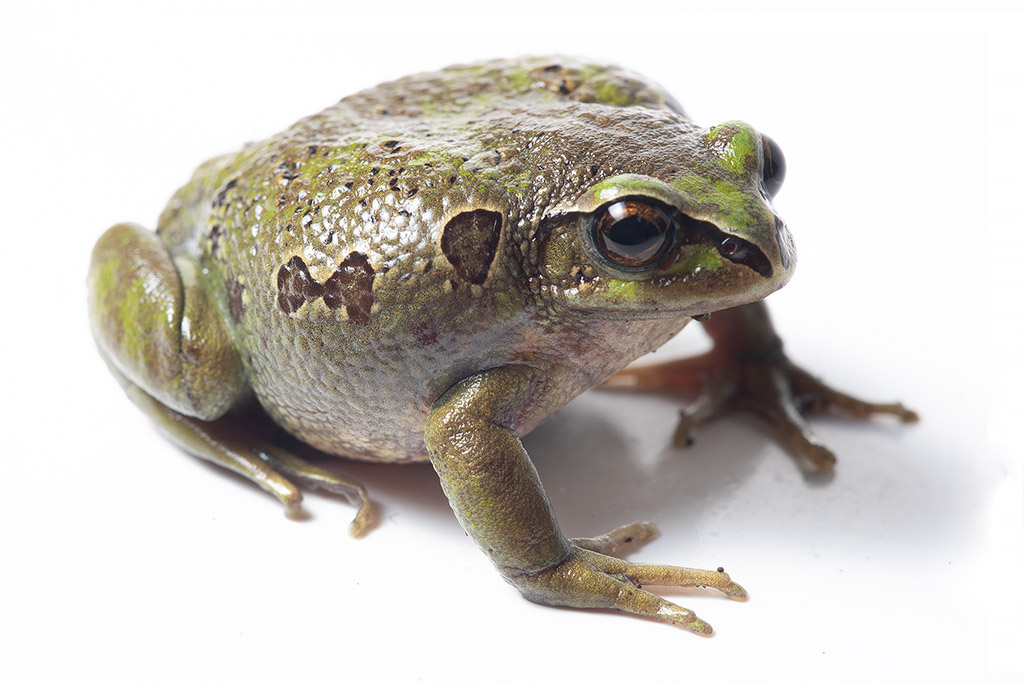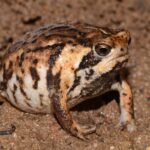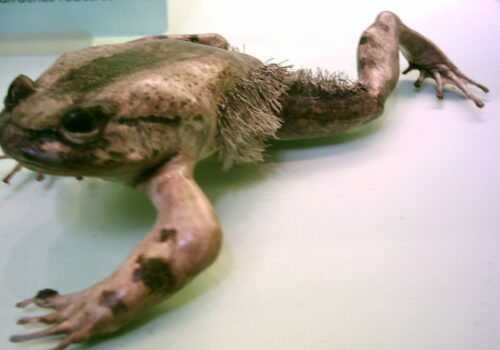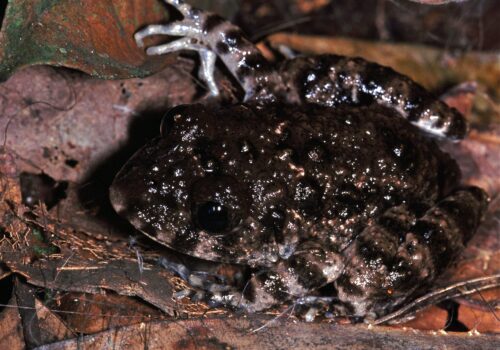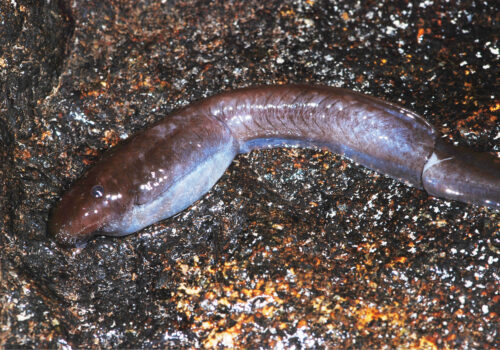- Leptopelis ocellatus: Unveiling the Enchanting Secrets of the Ocellated Forest Treefrog
- Taxonomy and Classification
- Natural Habitat: A Life Amidst the Green Cathedral
- Physical Characteristics: The Splendor of Ocellated Armour
- Behavior and Life Cycle: A Meticulous Dance of Survival
- Ecological Role: Guardians of Forest Health
- Threats and Conservation Status: Navigating the Brink
- Cultural and Scientific Significance: Symbolizing Biodiversity's Fragility
- Conclusion: Preserving an Arboreal Jewel for Generations to Come
Leptopelis ocellatus: Unveiling the Enchanting Secrets of the Ocellated Forest Treefrog#
Amidst the lush foliage, the nightly symphony of the African rainforest echoes softly beneath a tapestry of starlight. Among this multitude of voices emerges the distinctive call of a remarkable amphibian—Leptopelis ocellatus, commonly known as the Ocellated Forest Treefrog. Cloaked in subtle shades of green and adorned with striking eyespots, this elusive amphibian navigates its dense woodland habitat with a quiet but impactful presence. Often overlooked but ecologically invaluable, Leptopelis ocellatus serves as a glowing testament to the wonders hidden within our planet’s diminishing tropical forests.
But what makes this particular species so fascinating? Beyond its elegance and captivating appearance lies a complex web of ecological relationships, intriguing behavior, and potent symbolism in biodiversity conservation. Join us as we journey into the vibrant world of Leptopelis ocellatus, delving into the heart of its rainforest home, uncovering its extraordinary adaptations, and exploring why preserving this enchanting frog means safeguarding the health and beauty of entire ecosystems.
Taxonomy and Classification#
Finding clarity within the vast amphibian universe begins with taxonomy, the scientific system of classification that provides structure and meaning to biodiversity. Leptopelis ocellatus belongs to the diverse frog family Arthroleptidae, a lineage brimming with an incredible variety of species uniquely adapted to the habitats of Sub-Saharan Africa. Within this family, Leptopelis forms a distinctive genus commonly referred to as tree frogs due to their arboreal habits and specially-adapted toe pads.
The genus Leptopelis comprises dozens of species scattered across tropical and subtropical regions, each species adapted creatively to their unique ecosystem niches. Among its closest relatives is Leptopelis vermiculatus, the brilliant endemic treefrog of Tanzania, known for its vibrant coloration and shrill, musical call. However, despite similarities, Leptopelis ocellatus stands apart in its unique set of characters—from its distinct visual markings to distinctive vocalizations—shaping its own specialized evolutionary path and ecological role.
Natural Habitat: A Life Amidst the Green Cathedral#
The natural home of the Ocellated Forest Treefrog is the dense, humid rainforests spanning across West and Central Africa, including nations such as Cameroon, Gabon, Equatorial Guinea, Nigeria, and Congo. Leptopelis ocellatus thrives within pristine evergreen forests, characterized by towering canopies and vibrant understory vegetation—a sanctuary filled with interwoven vines, dense foliage, sparkling streams, and lingering mists. These forests constitute one of the richest ecosystems on Earth, teeming with life in every leaf, bark crevice, and hidden pool.
A deft arboreal species, Leptopelis ocellatus spends the majority of its time concealed among branches, vines, and leaves, effectively utilizing camouflage and stealth. Feeding, living, and breeding entirely within these vertical realms, the species benefits from a life above ground, avoiding terrestrial predators and gaining access to a bounty of insect prey.
Microhabitat Preferences#
The frogs choose vegetative concealment during daylight hours, carefully selecting perches near water sources, such as slow-flowing streams and small forest pools. Emergent vegetation along stream margins provides crucial safe havens and perfect ambush sites for capturing unwary insects. This selective microhabitat preference exemplifies the intricate relationship between species and their environment, as even subtle disturbances to water quality, stream flow, or forest integrity can significantly impact their survival.
Physical Characteristics: The Splendor of Ocellated Armour#
Perhaps one of the most mesmerizing aspects of Leptopelis ocellatus lies within their striking appearance and elegant body structure. Adult individuals typically range between 4 to 7 centimeters (1.5–2.75 inches), sizing them comfortably into the palm of your hand. Their sleek, athletic build provides both grace and agility required for their arboreal lifestyle.
The standout physical trait lending the frog its common name—Ocellated Forest Treefrog—is the presence of distinct, dark circular markings (‘ocelli’) scattered over their dorsal surfaces. Against a backdrop usually ranging from verdant greens to subtle browns and greys, these ‘eyespots’ mimic the appearance of shadows dappling sunlight-filtered leaves, creating superb camouflage from predators like snakes and bird species scanning from above.
Adaptations for Arboreality#
Beyond coloration, the frog is masterfully adapted for life above ground. Large eyes provide excellent nocturnal vision, enabling the species to hunt after sunset when insects, their primary dietary staple, abound. Special adhesive pads on the tips of their toes grant them unmatched climbing capabilities, allowing swift and precise movements across foliage. Strong, elongated hind limbs facilitate impressive leaps, both from branch to branch and in swift escapes when threatened.
Behavior and Life Cycle: A Meticulous Dance of Survival#
As twilight envelops tropical forests, the nocturnal chorus builds. Males of Leptopelis ocellatus emerge from their daytime shelters, climbing to strategic positions where their unique, melodious calls permeate the nighttime air. Each vocalization serves as both a territorial declaration and an enticing invitation to potential mates—signalings that highlight the crucial roles acoustic communication plays within amphibian societies.
Breeding Magic Beneath the Moonlight#
The breeding season, typically sparked by the onset of heavy rains, sees males gathering near forest streams and pools, meticulously calling to attract females from afar. Once successful in courting a female, the pair selects suitable vegetation, typically hanging leaves positioned above shallow pools. Here, females lay strings of eggs encapsulated in protective jelly, purposefully placed to prevent predation and promote successful development. When rains arrive, the emergent tadpoles wriggle free from eggs, dropping neatly into waterways below to continue their aquatic development phase.
Feeding and Predatory Behavior#
Leptopelis ocellatus is an insectivorous hunter, actively pursuing moths, crickets, beetles, and various soft-bodied terrestrial invertebrates. They rely heavily on stealth and ambush tactics, patiently waiting for prey to venture within reach, then striking with rapid precision. Tadpoles primarily feed on algae and organic debris, quietly grazing and recycling nutrients in forest pools—each stage crucially shaping their ecosystem.
Ecological Role: Guardians of Forest Health#
In the complex microcosm of tropical forests, every species plays a crucial role in maintaining ecological equilibrium. Leptopelis ocellatus proves no exception; as efficient insect predators, these frogs control insect populations, potentially limiting pests harmful not only to vegetation but larger animals and even local communities. Additionally, as prey themselves for numerous predators, from chameleons to snakes and birds, their presence bolsters intricate food webs, contributing to overall biodiversity.
Amphibians, sensitive to changes in their environment, also act as invaluable indicators of ecological integrity. The presence of thriving populations of Leptopelis ocellatus reflects a healthy, balanced forest ecosystem—one undamaged by pollutants, habitat fragmentation, or climate instability.
Threats and Conservation Status: Navigating the Brink#
Unfortunately, like many tropical amphibian species, Leptopelis ocellatus faces growing threats from habitat loss, primarily through agricultural expansion, logging, and urban development. Furthermore, increasing climate instability presents additional pressures, altering rainfall patterns that govern their breeding cycles and tadpole survival.
Currently, the species is listed as ‘Least Concern’ on the IUCN Red List; however, habitat destruction across their native range is an increasingly alarming issue that complicates their prospects for the future. Conservationists advocate encouraging habitat protection, sustainable land use practices, and comprehensive ecological research to safeguard these amphibians from tragic declines experienced by related species worldwide.
Cultural and Scientific Significance: Symbolizing Biodiversity’s Fragility#
The Ocellated Forest Treefrog has also found subtle significance within local human cultures—its haunting, distinct calls are integral to the nocturnal ambiance of African jungles, intimately woven into indigenous lore and traditional ecological understanding. Scientifically, documenting their behaviors, habitat needs, and life cycles enriches our understanding of biodiversity and underscores the delicate balance required to maintain vibrant ecosystems in an ever-changing world.
Conclusion: Preserving an Arboreal Jewel for Generations to Come#
Leptopelis ocellatus offers us more than just an intriguing biological study; it embodies the interconnected web of life within tropical forests, a symbol for biodiversity conservation. Theirs is a story reminding us of nature’s fragility and resilience alike—a call for unified action in conservation, habitat protection, and ecological stewardship.
By safeguarding their homes, we protect not just a solitary species but the entire extraordinary symphony of life surrounding them. Let us answer the chorus, pledging to preserve their magical forest homes for generations yet unborn.







